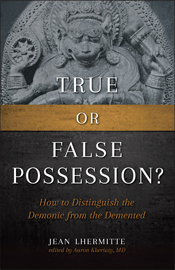The U.S.-Vatican Relationship
More in Common Than Meets the Eye
The United States and the Vatican have had a long and complicated history. In The Global Vatican (Rowman & Littlefield; 308 pages; $27.95), Francis Rooney, who served as U.S. ambassador to the Holy See from 2005 through 2008, provides a diplomatic history of the relationship between the two sovereigns.
Although generally friendly now, the relationship was, for most of U.S. history, somewhat chilly. Americans had deep anti-Catholic sentiments, and well into the 20th century, there were doubts among those in America’s power structure whether Catholics could make good Americans at all.
As for the Vatican, the papal diplomatic corps and household at first did not know what to make of this revolutionary, democratic upstart. In a famous story, Benjamin Franklin rejected the Vatican’s request that the United States approve its bishop nominations — as European countries had done — by saying that, in this new nation, the Church’s affairs were her own. This was something new in the world, and it took the Church some time to get used to it.
But, as Rooney notes, the two really had much in common. Both believed humanity was endowed by its divine Creator with dignity and freedom, and both had a mission to relieve injustice and suffering. Such common principles bound them more closely together as the years progressed. Further, the increasing numbers of Catholics who were also American lessened the bigotry of America’s Protestant past.
In an exclusive interview with Register columnist Gerald J. Russello, Rooney takes us through the high and low points of this unique diplomatic relationship, highlighting the crucial events that have shaped the relationship’s current state.
Mr. Ambassador, thank you for taking my questions for the Register. How did you come to write The Global Vatican?
I have been asked to speak quite often about serving as an ambassador at the Holy See by various Catholic and other religious — as well as many non-religious — groups, and I found a great deal of interest and a general lack of familiarity with the role the Holy See has played in the area of international relations and diplomacy, about how Holy See diplomacy is organized and about our mission there.
After a while, I decided to write this book to hopefully broaden and deepen this understanding among people who are interested in this area, beyond those whom I may be able to meet and speak with.
The diplomatic outreach of the Holy See has been valuable to the resolution of problems in the world, and the principles upon which it is based are enduring. Further, there is a somewhat unique history of relations between the Holy See and the United States.
Unlike other posts, the ambassador to the Holy See faces a distinct challenge for a Catholic, especially when the views of the United States and the Vatican are at odds. How does a faithful Catholic diplomat navigate that line?
In many respects, service as an ambassador to the Holy See resembles service at any other bilateral mission. A United States ambassador is charged by his president to represent the United States and advance its interests, to broaden understanding of American values and to engage positively with the diplomatic [corps], citizenry and government of the host country.
Secondly, the First Amendment calls for a careful avoidance of interference in or public discussion of ecclesiastical matters. Fortunately, given the strong alignment of the values of the Holy See and the principles upon which our country was founded, there are not too many areas of disagreement, and when they do occasionally arise, a broader framework of common interests and mutual respect exists to give perspective to the dialogue.
Is there one story that you wish had made it into the book?
I would have liked to include anecdotes from each of the previous and subsequent Holy See ambassadors, but we became limited in how long the book was supposed to be. As a result, I had to select a few key vignettes from the service of my colleagues which most poignantly capture Holy See diplomacy in the recent past.
There have been varying rumors and speculations surrounding certain trips to Libya undertaken by the first Holy See ambassador, William Wilson, who was a close friend of President Reagan, but he died in December 2009.
It might have been interesting to have adduced firsthand comments about this.
The plight of Christians in the Middle East has attracted enormous attention over the last few years. Do you see the Vatican-American relationship able to improve conditions for them?
This is a terribly important issue and tragic situation, which has grown in perspective continually for the last 30 or more years. Christians have increasingly become marginalized and persecuted as harmful, radicalized Muslim governments have proliferated throughout the Middle East and now into Africa. This is a significant opportunity for the Holy See, as the ultimate "soft power," lacking a territorial or hegemonic agenda, to add value to the dialogue and diplomatic exchange directed at reducing conflict and bringing better conditions to Christians.
While I was serving, the Bush administration characterized post-9/11 confrontation with radical or "jihadist" Islam as the "Global War on Terror." They had no better ally than the Holy See.
Pope Benedict spoke clearly and consistently about this from the early moments of his papacy and brought the issue to the fore in his September 2006 address at Regensberg, Germany.
Right now, amidst the Syria civil war, Pope Francis’ day of prayer and the Holy See diplomatic note calling for humanitarian intervention, respect for all Syrian citizens — not just some sects or religions — and peace-seeking can only help fortify those who genuinely seek a peaceful resolution of the conflict.
Gerald J. Russello is editor of the
University Bookman (KirkCenter.org).
- Keywords:
- Oct. 20-Nov. 2, 2013

















